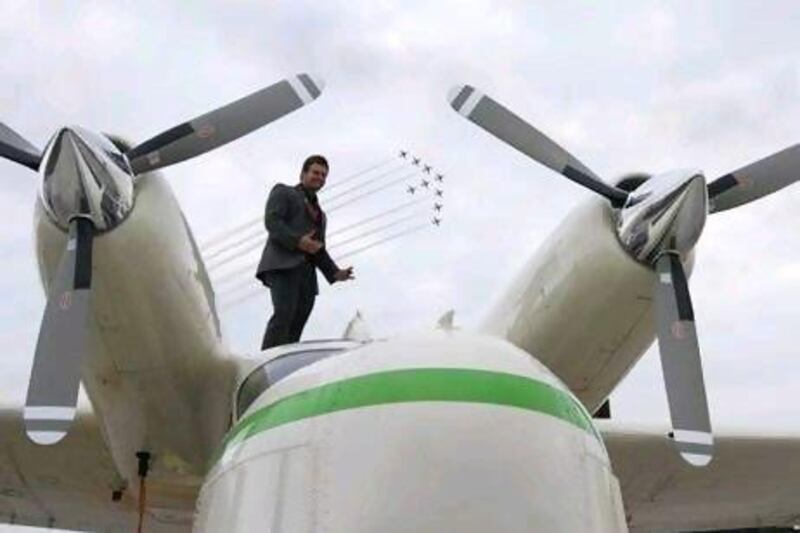A year after a plane crash in Al Ain that killed four Americans, authorities are still no closer to finding the cause.
The General Civil Aviation Authority (GCAA), which is handling the investigation, released a preliminary report into the accident last March. However, a final report that is expected to offer details about the cause of the accident is not expected until the third quarter of this year.
"We're waiting for some examination results," said Ismael Abdel Wahed, executive director of air accident investigation at the GCAA.
Elaine White, mother of Joshua Hucklebridge, who died in the crash at age 28, said her family was still overcome with anxiety about what happened and why.
"Josh was the kind of person who lit up every room, and he always made people laugh and feel comfortable," Mrs White said. "His goals were just about to be fulfilled, and then he died before everything came together.
"I am so disappointed it is taking so long to find out what happened. Why does it take so long?"
Mr Abdel Wahed said some components of the rare seaplane, which was destroyed by the impact and a subsequent fire, were sent to the United States for testing.
All four passengers on board the 1944 McKinnon G21G turboprop, also known as a Grumman Goose, were killed when the antique seaplane crashed on to the taxiway shortly after take-off from Al Ain International Airport on February 27 last year.
The private plane was en route to Riyadh on the first leg of a week-long trip that would have taken the men to Morocco and South America before ending up in Texas. The seaplane was owned by Triple S Aviation, a Texas company with a consultancy in Dubai.
According to the preliminary report, the plane took off and accelerated "normally" before veering to the left and then hitting the ground with its nose down and on its left side. The plane skidded for approximately 32 metres before stopping.
Mrs White and two other families received settlements from the plane owner's insurance company, though the cause of the crash has not yet been determined.
Hucklebridge was the international project manager for Triple S Aviation, an aircraft sales and aviation business development company with a defence and foreign military sales division. His high school friend Landon Studer, also 28 at the time of the crash, was the founder of Triple S and was piloting the plane at the time of the accident, according to GCAA's preliminary report.
Studer, who started Triple S in 2006, was an accomplished pilot who served in the US Air Force and worked for the US State Department as an aviation specialised skills officer. Two seaplane enthusiasts from the western US were also killed in the crash. Tyler Orsow, 25, and Chuck Kimes, 61, who is believed to have been the co-pilot, were both experienced pilots along for the transatlantic adventure.
The aircraft had been stored in the UAE since August 2010 and was parked inside a hangar.
On the day of the crash, the plane had undergone routine maintenance, described in the report as preventive maintenance that included the installation of an extra fuel tank.
Orsow wrote on his Facebook page that the four were refused access to the plane two days before the accident.
Mrs White said she would like to know who had access to the hangar before the flight and who installed the fuel tank.
A source close to the family, however, said aviation experts suspected the cause might relate to pilot error. A charred hard drive recovered from a computer in the plane is being analysed in the US.
The seaplane was a one-of-a-kind aircraft, experts said. The plane was modified in the 1970s, but the changes were unique and varied from normal modifications for that type of plane.
The plane was not required to have a flight data recorder.
The GCAA said in its preliminary report that the investigation would concentrate on laboratory examinations of "one or both engines and propellers" and the cockpit's central instruments panel.






